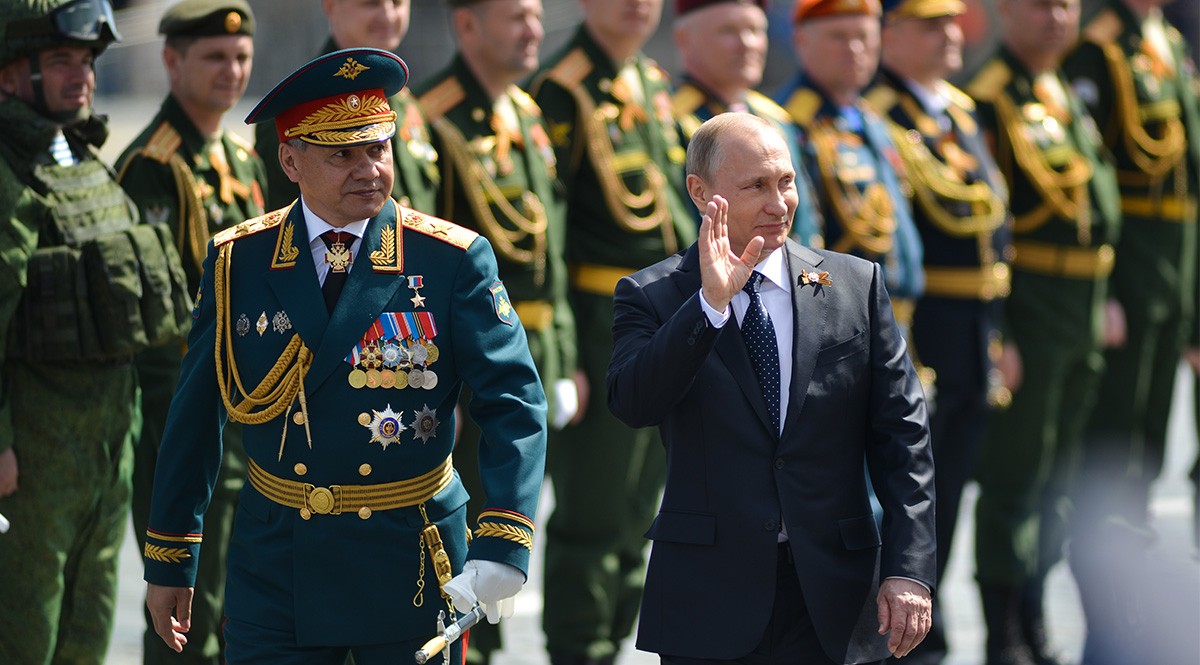Putin to Focus Significantly on Russian Security Policy in New Term
Vladimir Putin’s strategic objective during his fifth term will be to achieve the goals of the so-called special military operation in Ukraine. Russia will therefore attempt to politically divide NATO on the issue of supporting Ukraine, including by signalling its readiness to test the Alliance’s ability to fulfil the Article 5 guarantees of the North Atlantic Treaty. Therefore, it will consistently seek to raise the capabilities of the Russian armed forces and will increase the scope of hybrid activities against NATO states. For the Alliance, this means, among other things, that it will need to continue to support Ukraine, build up a credible deterrence capability against Russia, and be more coordinated in the fight against hybrid threats.
 Aleksiej Witwicki / Forum
Aleksiej Witwicki / Forum
During the campaign before the Russian presidential elections, Vladimir Putin repeatedly announced that the most important task of the authorities for the next six years would be to implement the objectives of the so-called special military operation (SMO), including integrating the annexed territories of Ukraine, changing that country’s authorities, and blocking its integration with NATO and the EU. To undermine the West’s willingness to help Ukraine, Russia will play with the risk of a regional war, as demonstrated, for example, by the words of Kremlin spokesman Dmitry Peskov, who said on 22 March that after Western interference in the SMO on the Ukrainian side, it had turned into a war. The long-term goal of the Russian government will remain the reconstruction of the Euro-Atlantic security system in line with the Russian demands of December 2021 (including the withdrawal of the Alliance’s military infrastructure from the countries admitted after 1997, and the reduction of military exercises conducted there), as explicitly declared by the Russian ambassador to South Africa, Ilya Rogachev, in a press article from 28 March.
Lessons From War—Russia’s Reconstitution of Combat Capabilities
Russia, in order to realise the goals of the SMO, is rebuilding its combat capabilities and has significantly increased the production capacity of its arms industry. According to the Russian Ministry of Defence, more than 100,000 people have joined the armed forces as contract soldiers since the beginning of 2024 (540,000 in 2023). Minister Sergei Shoigu announced that, as in 2023, two combined arms armies will be formed in 2024, and 14 divisions and 16 brigades are to be created.
Using the experience from Ukraine in recent months, Russia has improved the conscription system and intensified the activities of military training centres. They are now able to prepare around 35,000 troops per month, which gives a “surplus” of around 10,000 on average over the irrecoverable losses incurred in Ukraine. Moreover, further increases in the capacity of the training centres can be expected in the coming months.
Russia has also intensified the production and renovation of armaments crucial to the conduct of hostilities in Ukraine, such as tanks, drones (reconnaissance and strike), artillery ammunition, and sets of individual soldier’s equipment, among others. Radio-electronic warfare capabilities are also being developed. Most arms companies and military repair facilities have significantly increased employment and moved to a 24-hour working regime. The Russians are acquiring dual-use technologies necessary for military production from China and bypassing sanctions through some countries of Central Asia and the South Caucasus.
By analysing the course of the 2022 hostilities and the changes at the tactical level and logistical support introduced over the past several months, Russia has managed to eliminate a large part of the weaknesses of the first year of the war. This has made it possible to increase the effectiveness of Russian military operations in Ukraine and regain the military initiative.
Russia’s Probable Further Activities Against Ukraine
The intensive restoration of military capabilities indicates that Russia may be preparing for an offensive that could aim to reach the Dnieper line. It may also decide to open up a new direction of attack, such as towards Kyiv again.
The likelihood of widespread offensive action will increase over the next several months due to the Russian authorities’ determination to resolve the conflict in their favour and the country’s growing military potential. Russia may take advantage of the fact that three-year contracts of a significant number of Ukrainian soldiers, who have been fighting since 2022, will end next year. The Russian government is also counting on positive international dynamics, including the possibility of Donald Trump’s victory in this autumn’s U.S. presidential election, which, in their view, will help bring the conflict to a quick end on terms convenient to them.
In the coming months, however, the Russians will continue their war of attrition against Ukraine, hoping to further delay Western military aid and speed the declining Ukrainian ability to replenish losses, consequently weakening the morale of Ukraine’s armed forces. Russia will also intensify attacks on critical infrastructure and civilian facilities in order to inflict as much damage as possible on the Ukrainian economy, and change the attitude of the population there to one more willing to make deals with Russia.
Russia’s Likely Activities Towards NATO
Russia’s aims in Ukraine will be correlated with an increase in hostile activity towards NATO. The purpose will be to force Alliance states to accept a new shape of Ukrainian statehood, but also to adopt the Russian vision of the security system in Europe.
Russia is concentrating on increasing its capabilities in its western strategic direction, meaning in the Leningrad (LMD) and Moscow (MMD) districts, which were created from the disbandment of the Western Military District (MD) and the MD of the Northern Fleet. The LMD will be tasked with repelling threats from NATO, while the MMD will be additionally tasked with countering threats from the Ukrainian direction, and it is likely that units from the MMD will be part of the Regional Forces Group with Belarus. Russia has also implemented a programme to rebuild military airfields, to be carried out first in the west and far north of the country.
In addition, by manipulating the perception of the inevitability of war and hybrid activities, Russia will want to show that it is ready for conflict with the Alliance. Therefore, an intensification of the information war can be expected in the coming months, especially in countries with important elections, such as the United States. One of the Russian objectives will be to increase polarisation and promote politicians who question Allied commitments within NATO. Russia is also likely to intensify its use of other hybrid tools, including hostile activity in cyberspace, and sabotage actions targeting critical infrastructure, particularly in the Eastern Flank and Baltic Sea region. Especially vulnerable is port, rail, and energy infrastructure, but also the remnants of World War I and World War II chemical weapons dumped into the Baltic Sea, which through deliberate damage could contaminate a significant area of that sea basin. An increase in Russian military provocations is also possible, including more dangerous incidents at sea and in the air or unannounced exercises in the Baltic, Barents, and North seas with scenarios hostile to NATO.
Conclusions and Recommendations
Maintaining the independence of the Ukrainian state and its ability to counter Russian aggression will be crucial for European security and to make it more difficult for Russia to achieve its strategic objectives. For Western states, this implies the need to increase military support to Ukraine, including a significant acceleration and scale-up of deliveries of munitions, air- and missile-defence systems, radio-electronic warfare equipment, drones, and attack aircraft. At the same time, NATO countries should tighten the sanctions regime imposed on Russia to prevent it from acquiring dual-use components necessary for armaments production, and thus significantly hinder its restoration of combat capability.
NATO should focus on its priority to increase the credibility of its deterrence and defence against Russia. It is therefore necessary to initiate a long-term rearmament programme for the member states, especially those on the Eastern Flank, and increase defence industry production. In addition, the countries of the Alliance should further strengthen cooperation in combating hybrid threats and building resilience against them. This could be done by intensifying counter-intelligence cooperation, sharing information on incidents, and by increasing cooperation in cyberoperations and EU-NATO cooperation in this area. Political-military communication will also be important in deterring Russia, including the conduct of large exercises along the lines of this year’s Steadfast Defender, demonstrating Allied capabilities to, among other things, redeploy significant forces to the Eastern Flank.



.jpg)

